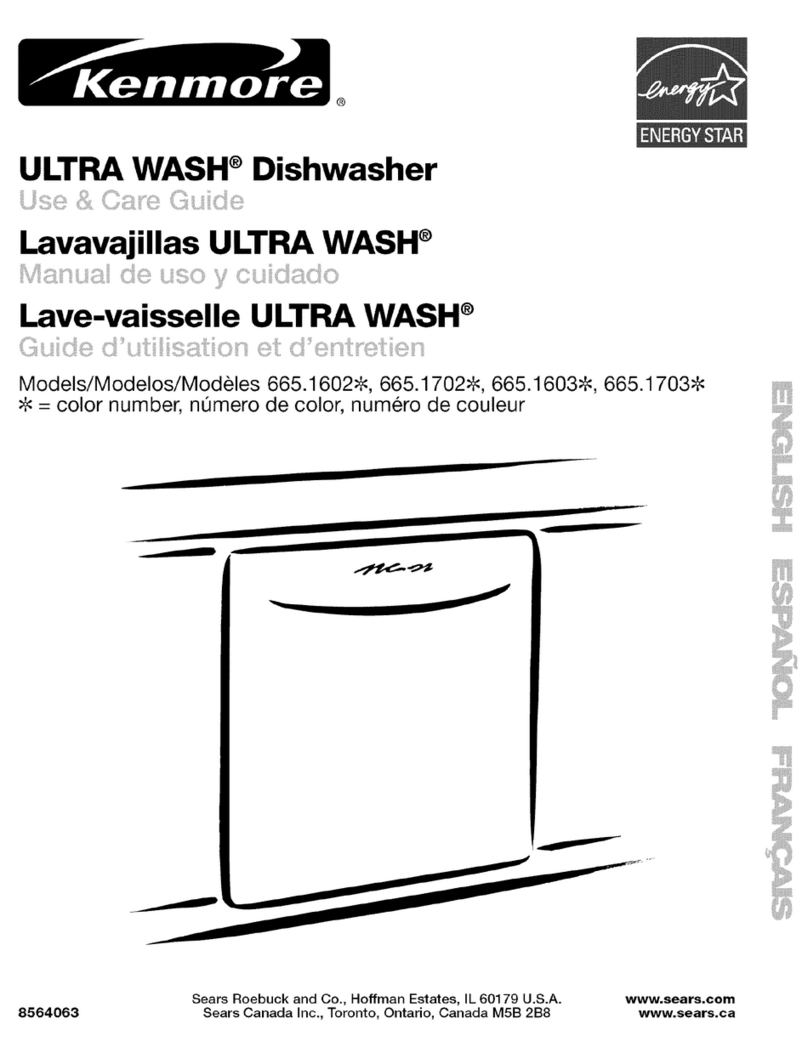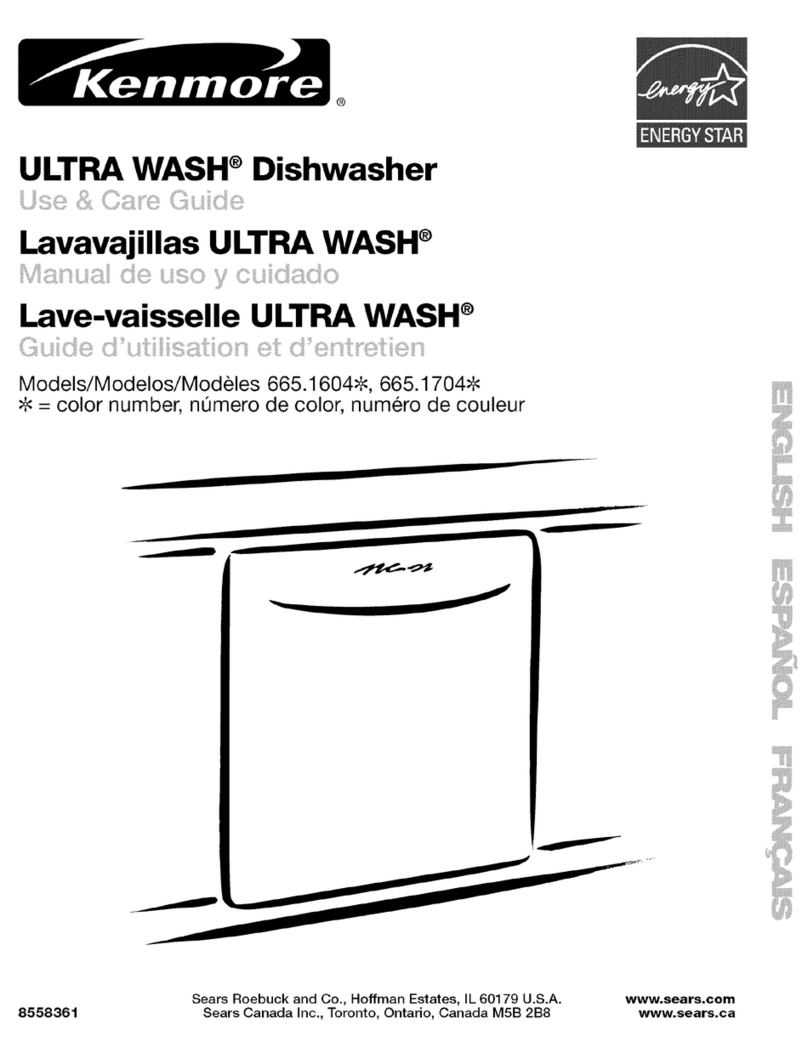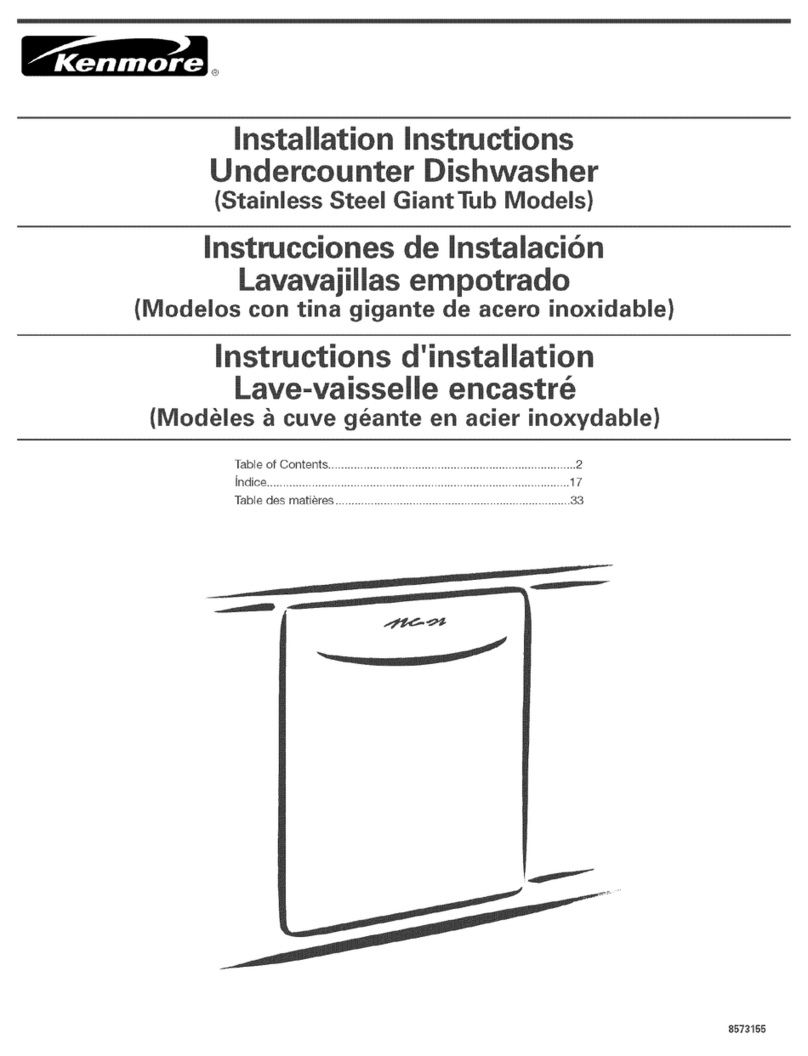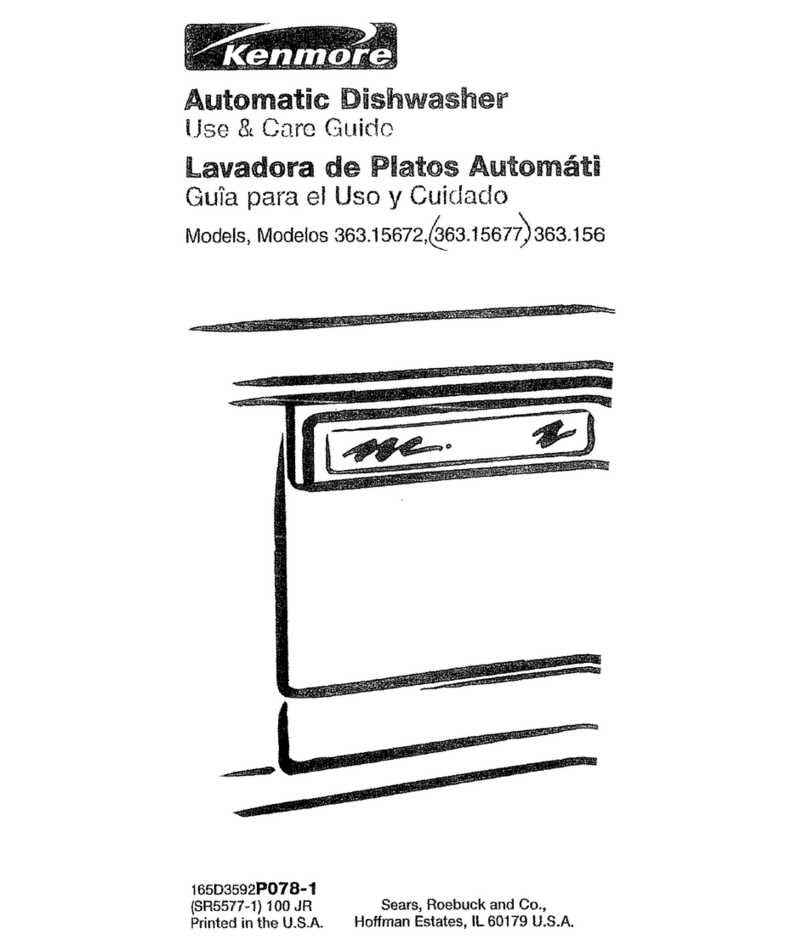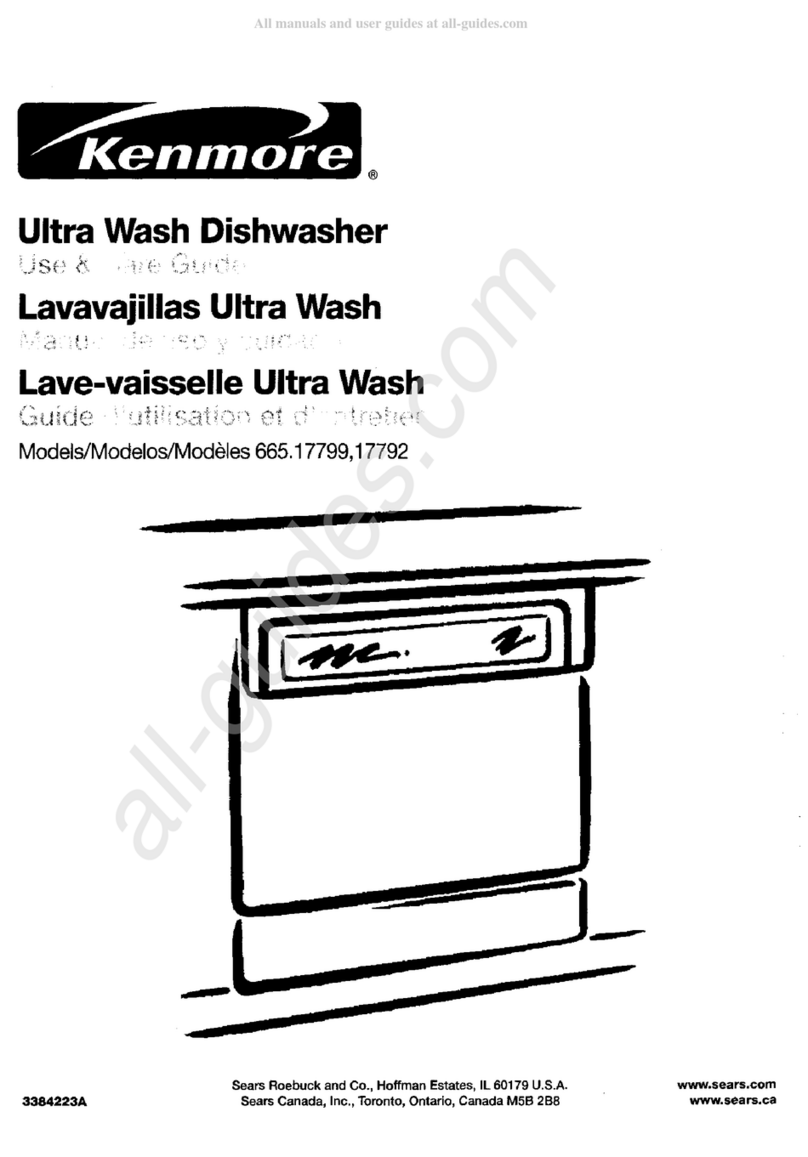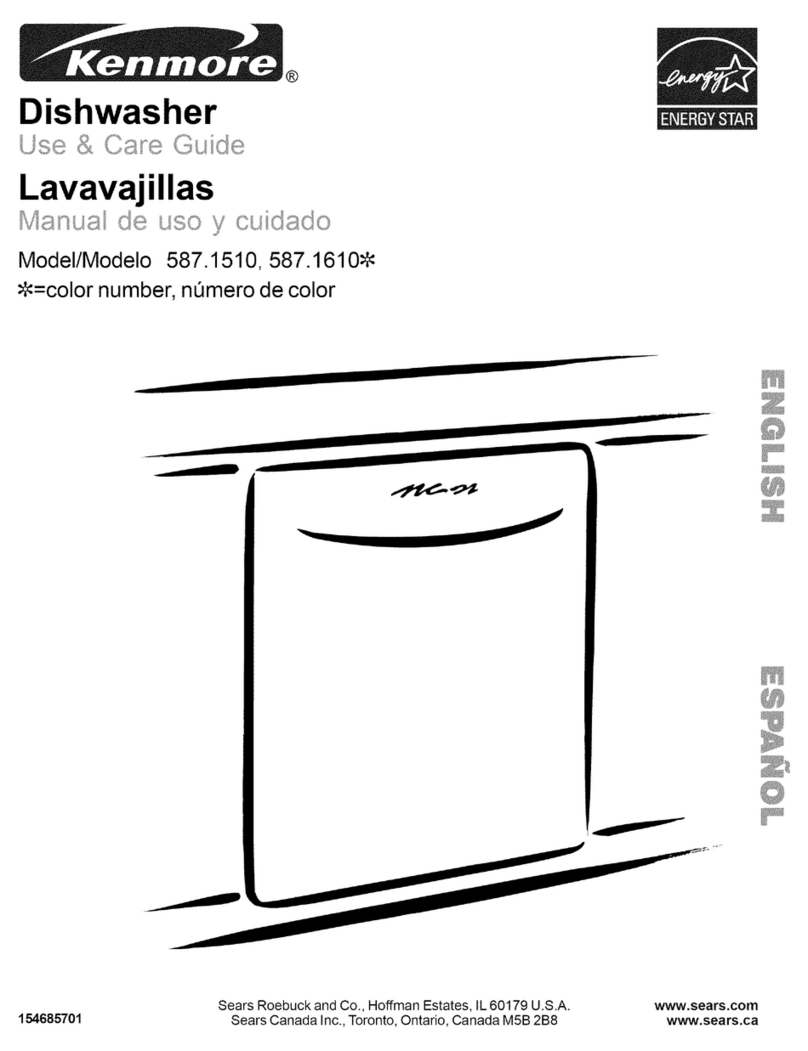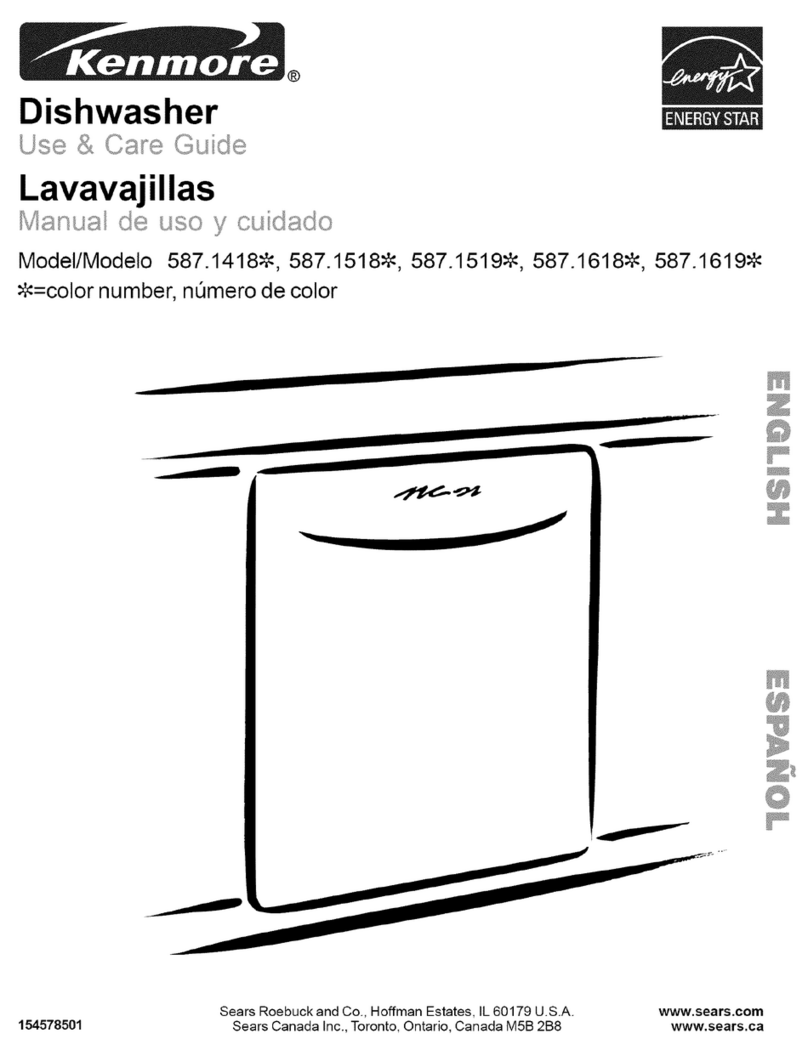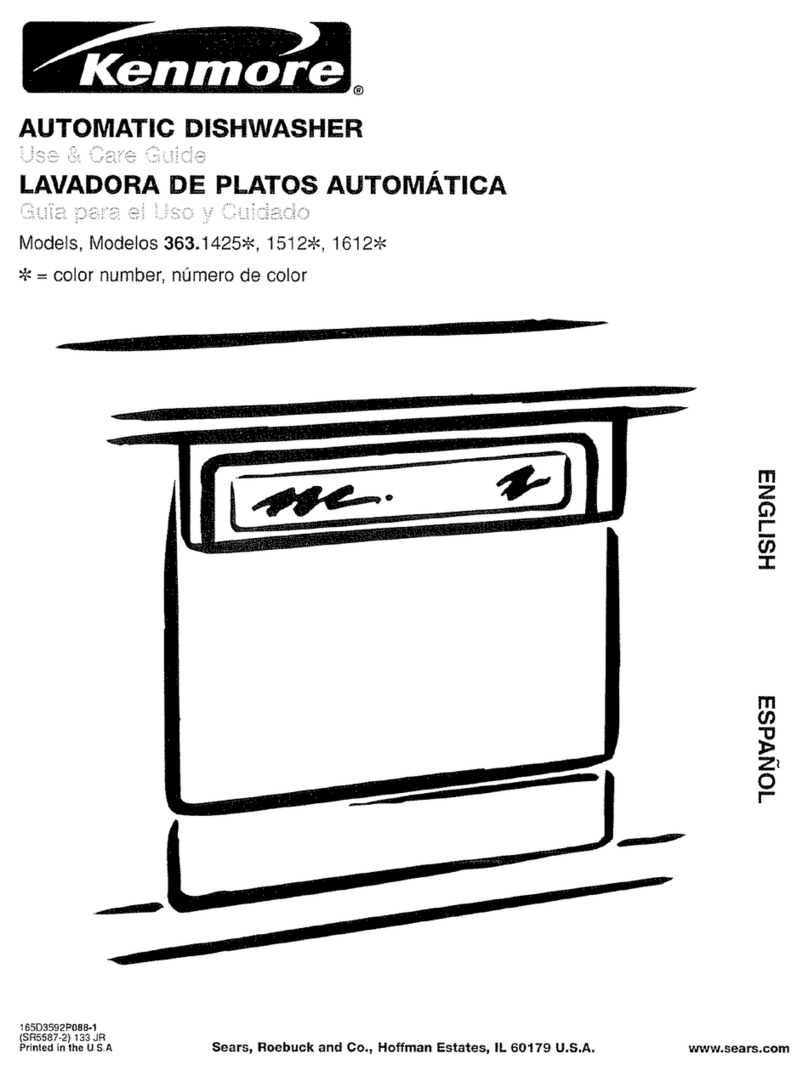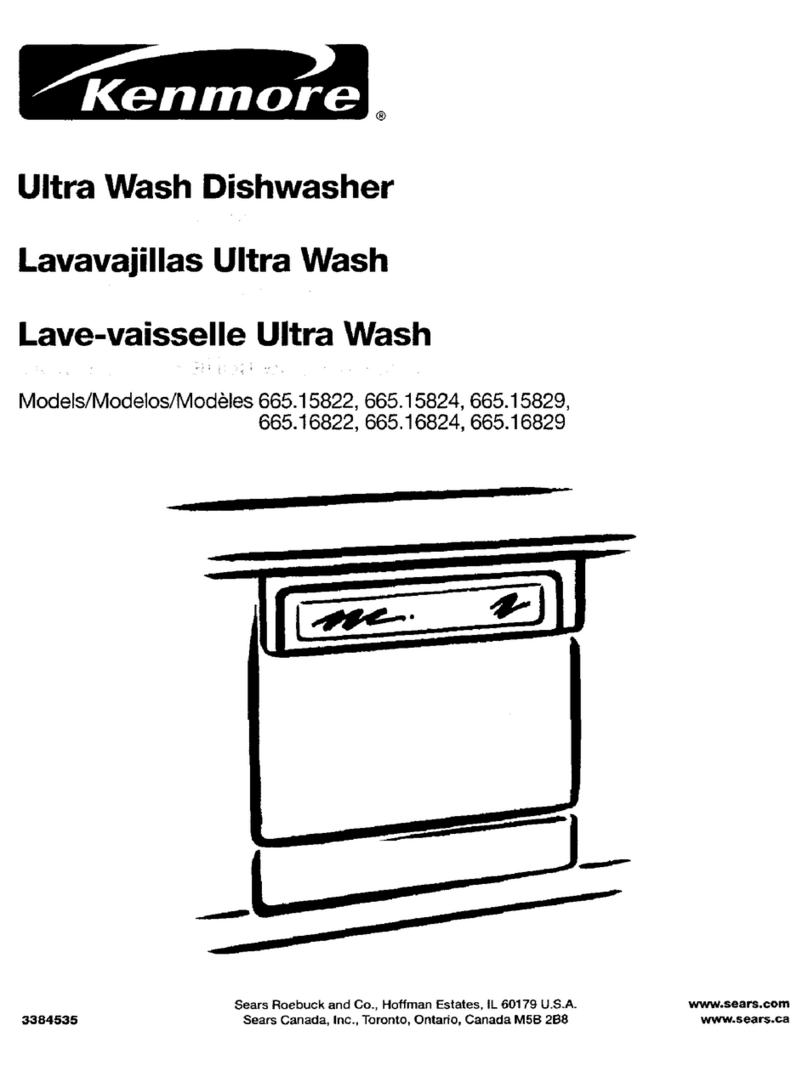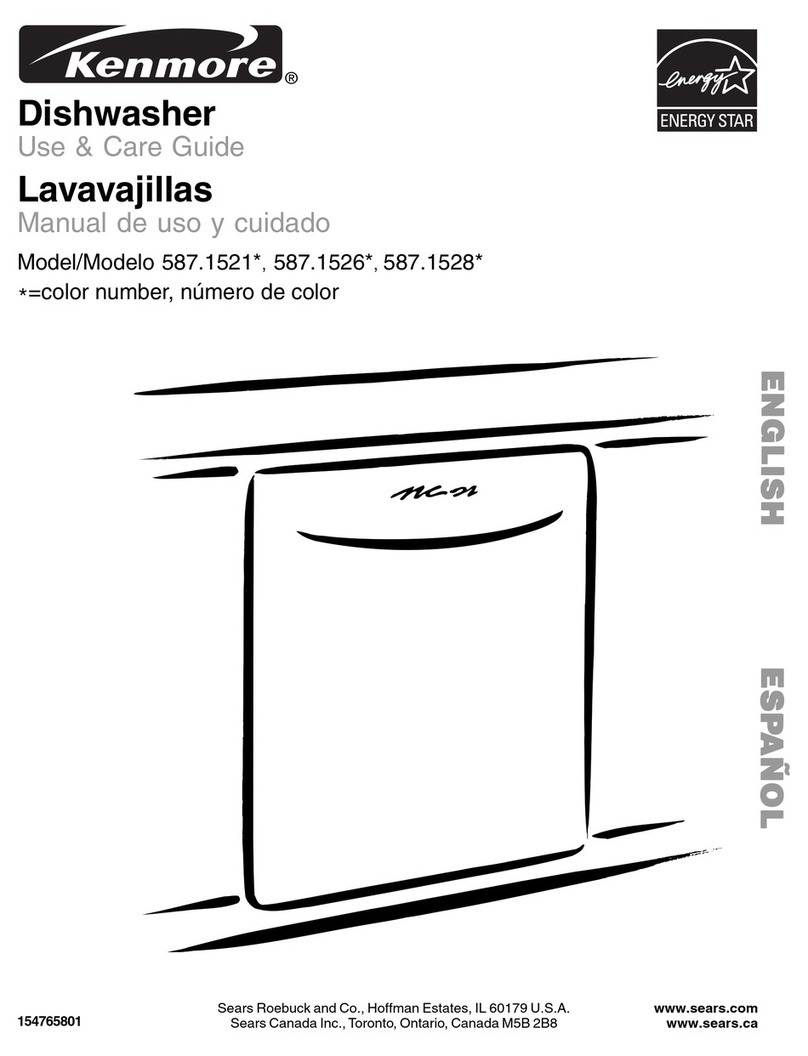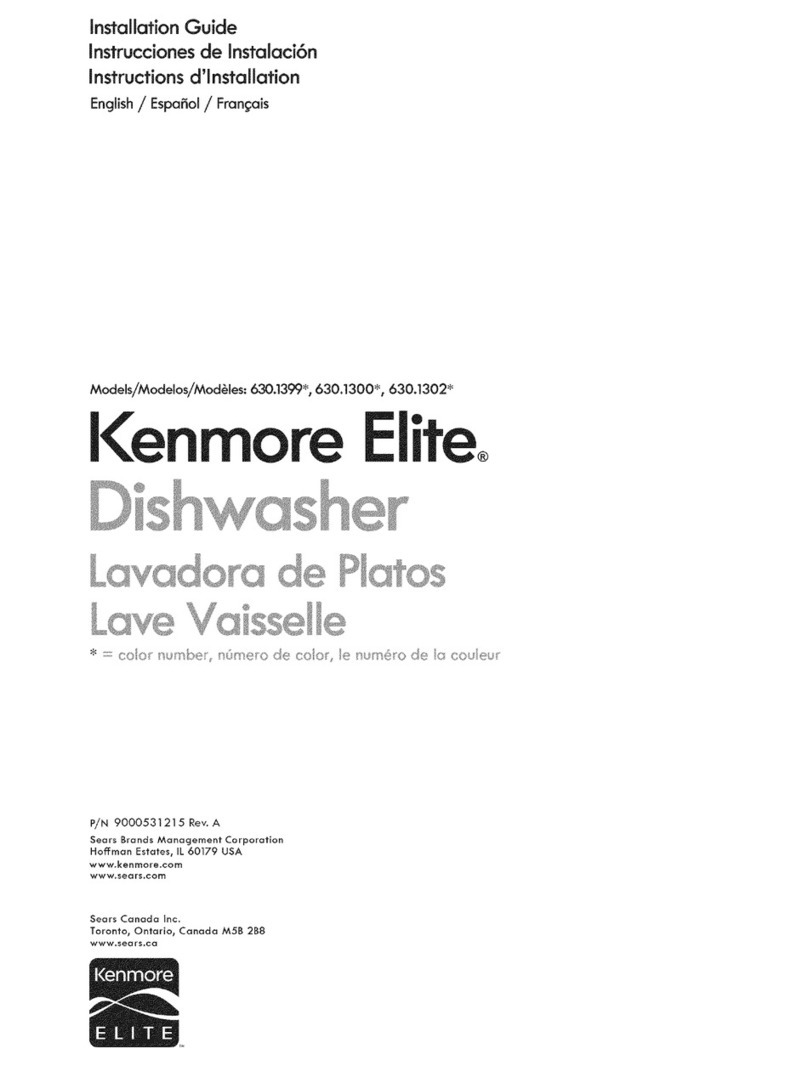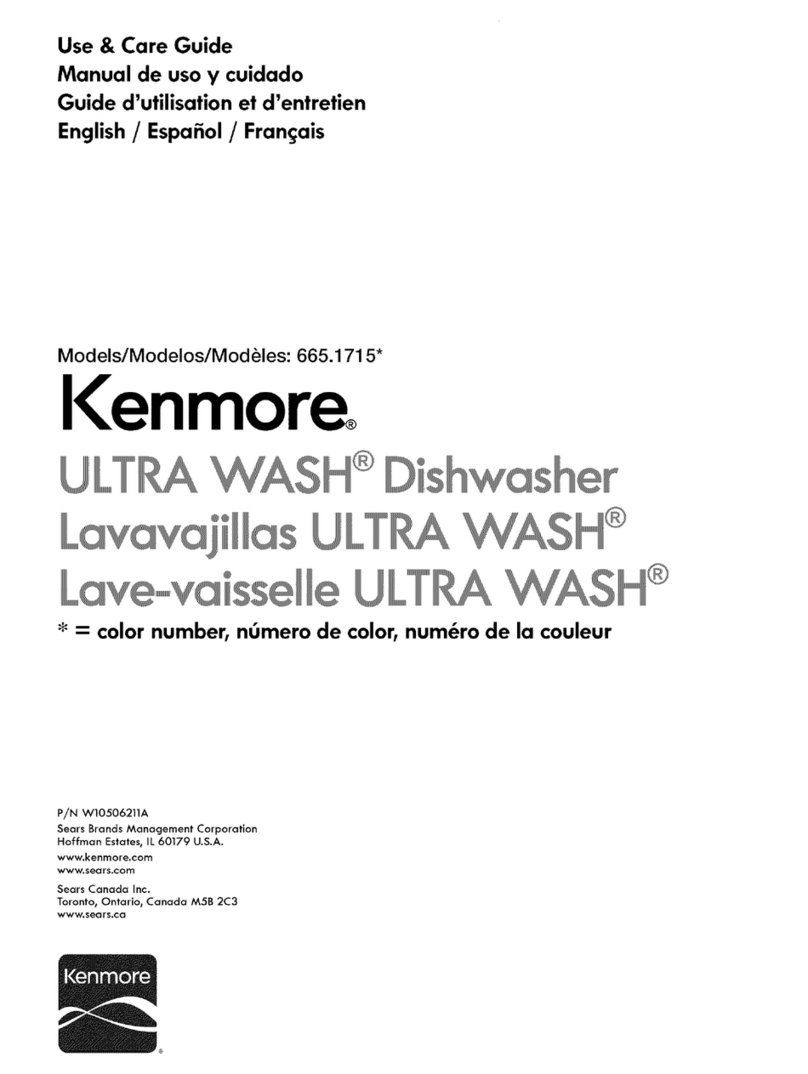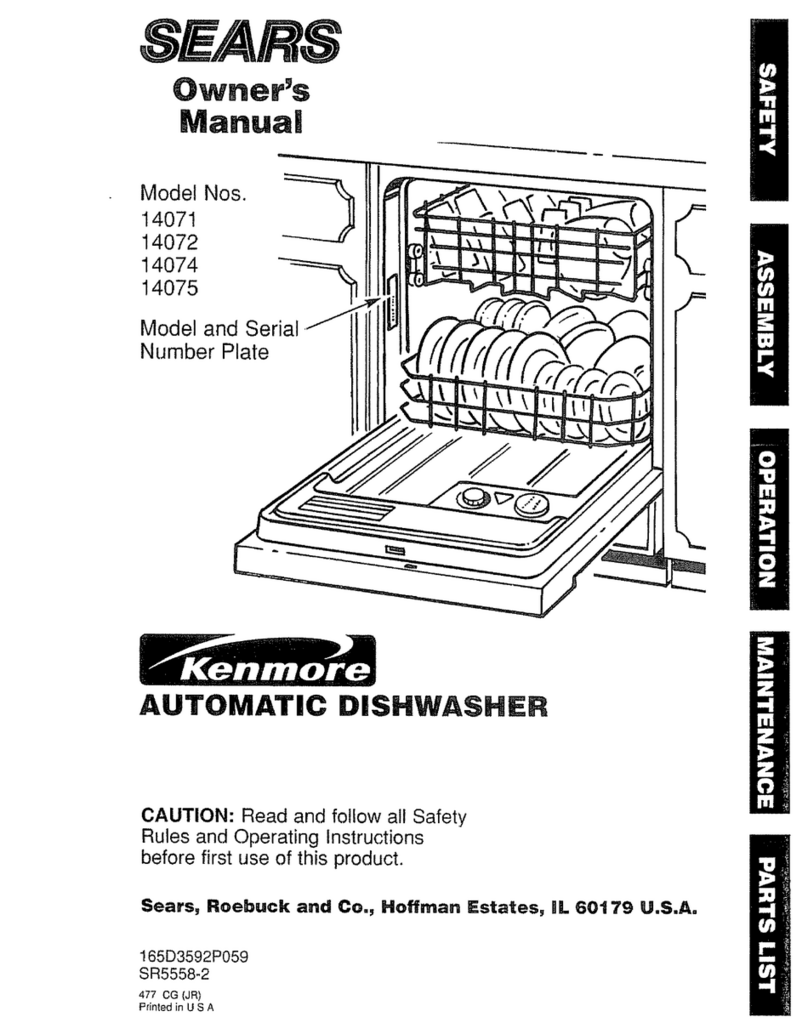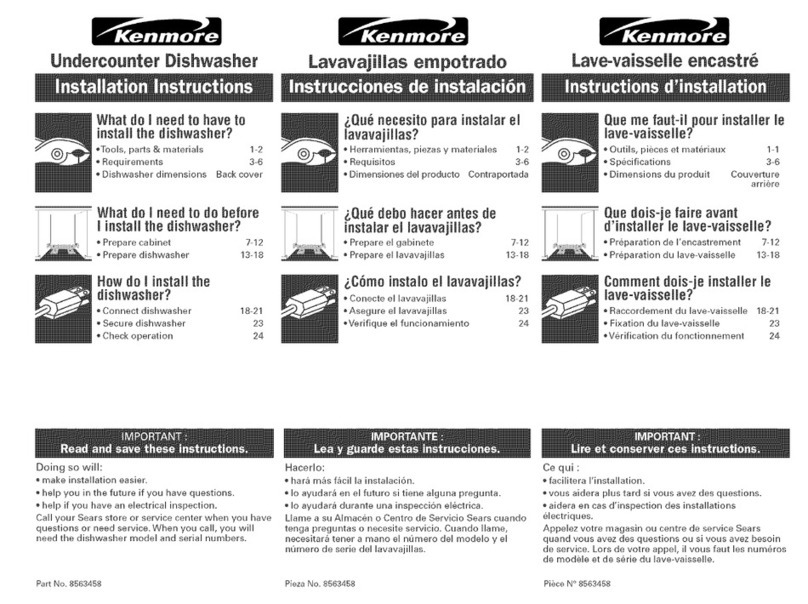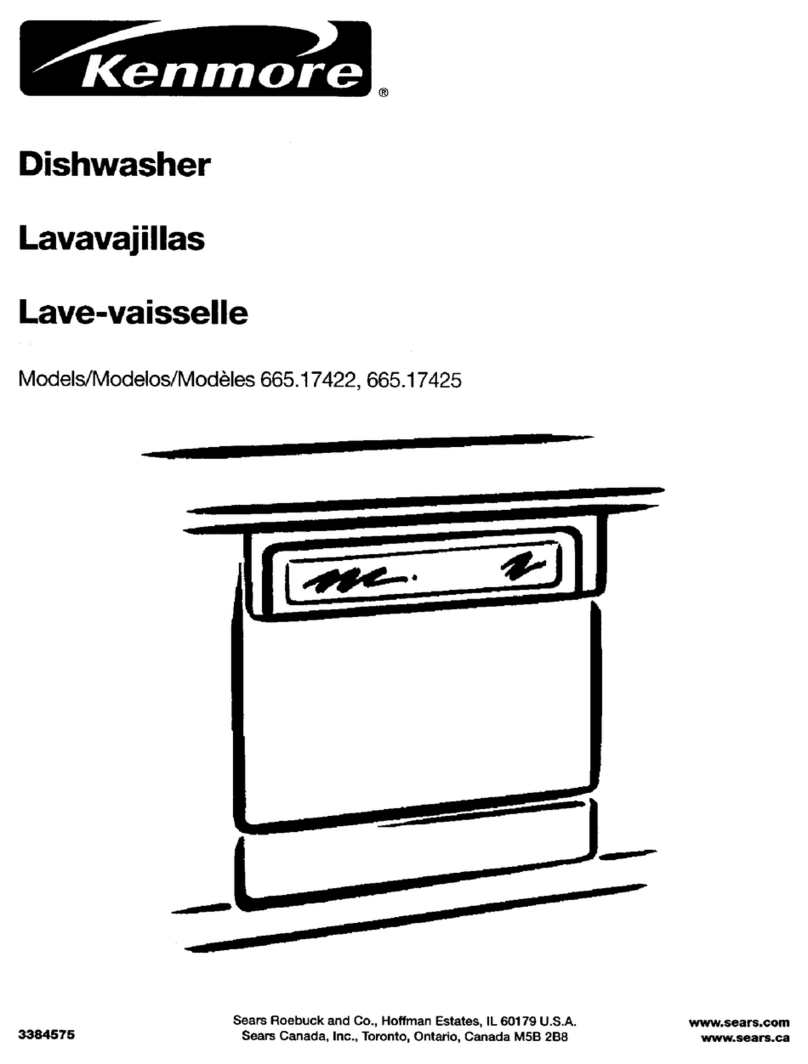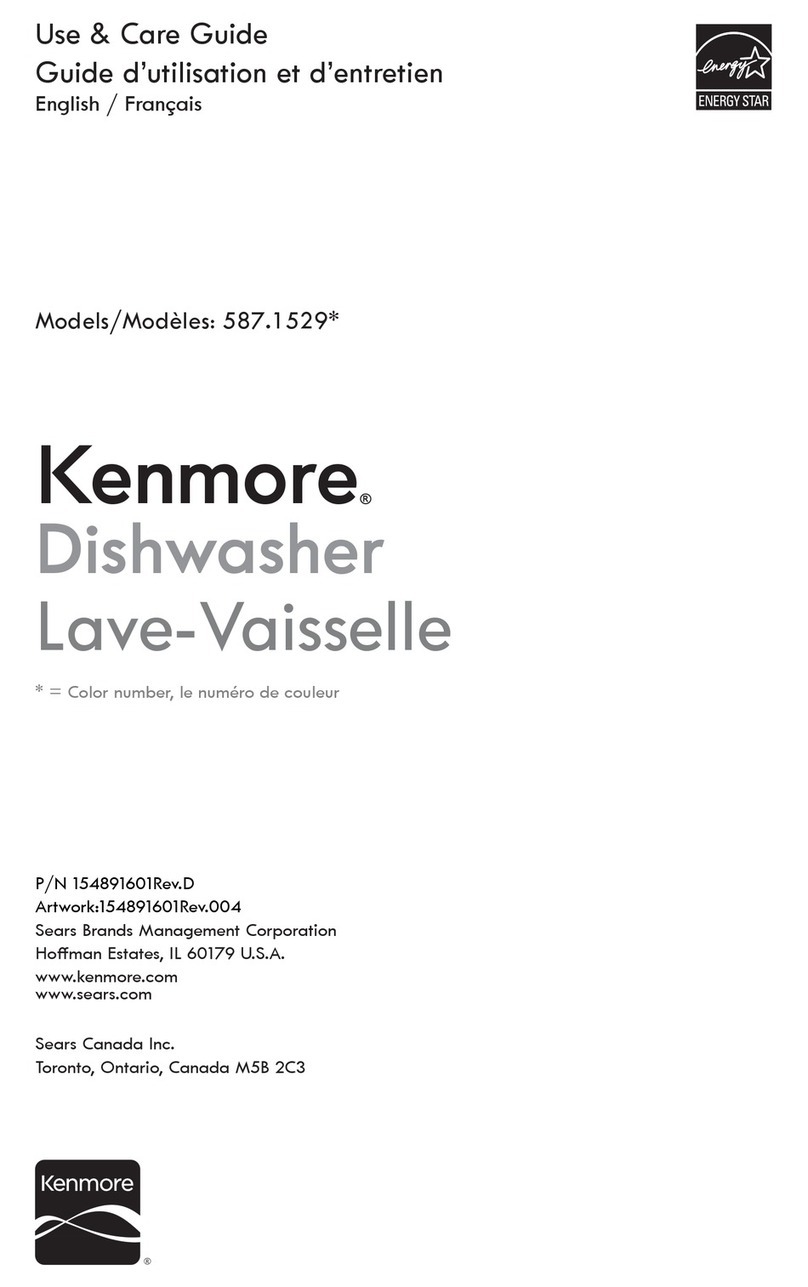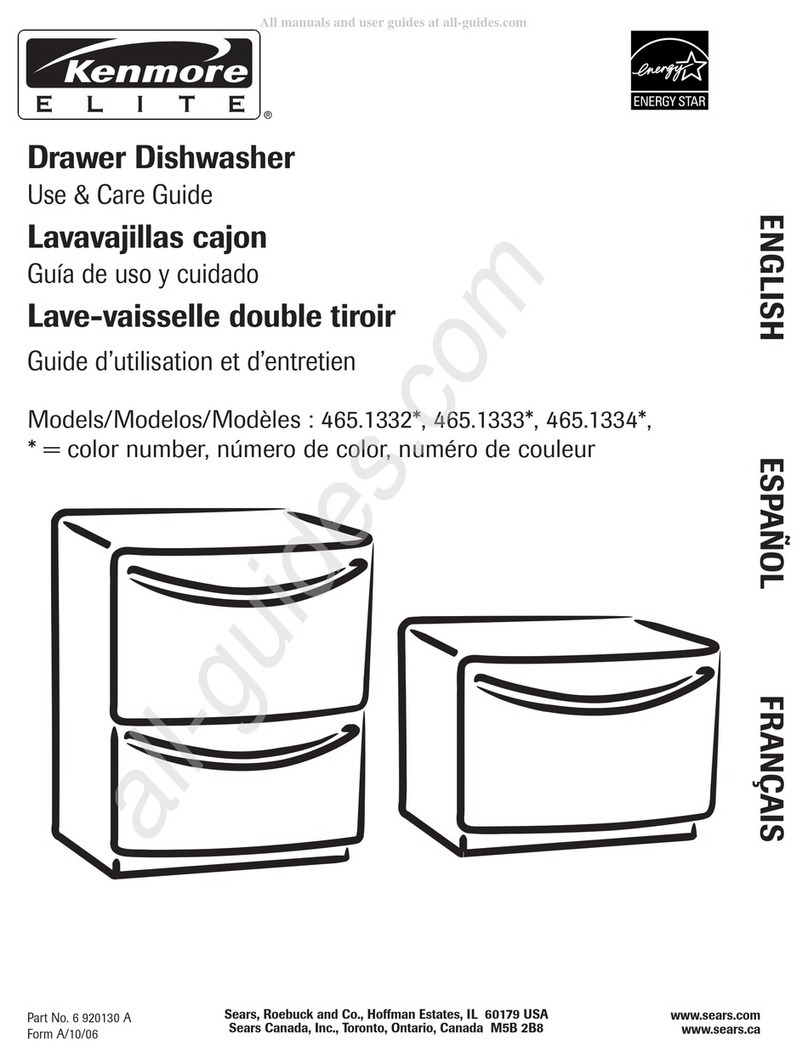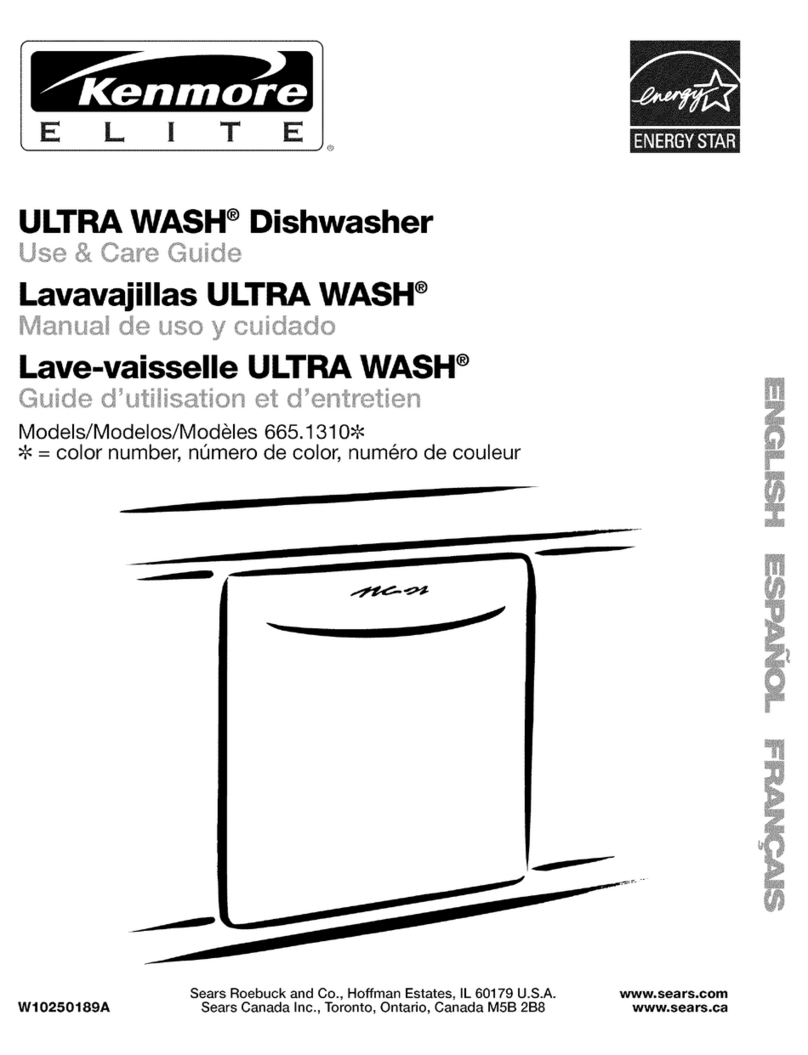
3
KenmorKenmor
KenmorKenmor
Kenmore Appliance We Appliance W
e Appliance We Appliance W
e Appliance Warar
arar
arrantyranty
rantyranty
ranty
ENGLISHENGLISH
ENGLISHENGLISH
ENGLISH
One Year Limited Warranty
Wheninstalled,operatedandmaintainedaccordingto
all instructions supplied with the product, if this
appliance fails due to a defect in material or
workmanshipwithinoneyearfromthedateofpurchase,
call1-800-4-MY-HOME®toarrangeforfreerepair. Ifthis
applianceis usedforother thanprivatefamilypurposes,
this warranty applies for only 90 days from the date of
purchase.
This warranty covers only defects in material and
workmanship. Sears will NOT pay for:
1. Expendable items that can wear out from normal use,
including but not limited to filters, belts, light bulbs, and
bags.
2. A service technician to instruct the user in correct
productinstallation,operationormaintenance.
3. A service technician to clean or maintain this product.
4. Damage to or failure of this product if it is not
installed,operated ormaintainedaccording toall
instructionssuppliedwith the product.
5.Damagetoor failure of this productresultingfrom
accident, abuse, misuse or use for other than its
intendedpurpose.
6. Damage to or failure of this product caused by the
use of detergents, cleaners, chemicals or utensils other
thanthoserecommendedinallinstructions supplied
withtheproduct.
7. Damage to or failure of parts or systems resulting
fromunauthorizedmodificationsmadetothisproduct.
Disclaimer of implied warranties; limitations of
remedies
Customer’ssoleandexclusiveremedyunder this limited
warrantyshallbeproductrepairasprovidedherein.
Impliedwarranties,includingwarrantiesof
merchantabilityorfitnessfor aparticular purpose,are
limited to one year or the shortest period allowed by law.
Searsshallnotbeliableforincidentalorconsequential
damages.Somestatesandprovincesdonotallowthe
exclusionorlimitationofincidentalor consequential
damages,orlimitationsonthedurationof implied
warrantiesofmerchantabilityorfitness,sothese
exclusions or limitations may not apply to you.
This warranty applies only while this appliance is used in
theUnitedStatesandCanada.
Thiswarrantygivesyouspecificlegalrights,andyou
may also have other rights which vary from state to state.
Sears, Roebuck and Co.,
Dept.817WA,Hoffman Estates,IL60179
Sears Canada Inc.
Toronto, Ontario, Canada M5B 2B8
Inthespacebelow,recordyourcompletemodelnumber,
serial number and purchase date. You can find this
informationonthemodeland serialnumberlabel,
located as shown in the Dishwasher Features section of
thisbook. Havethis informationavailable tohelp you
quickly obtain assistance or service when you contact
Searsconcerningyourappliance.
ModelNumber:587.
SerialNumber:
PurchaseDate:
Save these instructions and your sales receipt for
future reference.


